-
 Bitcoin
Bitcoin $79,309.9469
5.46% -
 Ethereum
Ethereum $1,575.4794
6.76% -
 Tether USDt
Tether USDt $0.9996
0.03% -
 XRP
XRP $1.8684
10.75% -
 BNB
BNB $559.1592
4.86% -
 USDC
USDC $0.9998
-0.02% -
 Solana
Solana $108.9193
9.75% -
 Dogecoin
Dogecoin $0.1493
10.49% -
 TRON
TRON $0.2326
3.85% -
 Cardano
Cardano $0.5862
10.61% -
 UNUS SED LEO
UNUS SED LEO $8.9694
0.72% -
 Toncoin
Toncoin $3.1094
5.06% -
 Chainlink
Chainlink $11.6110
10.41% -
 Avalanche
Avalanche $17.1493
12.22% -
 Stellar
Stellar $0.2310
12.64% -
 Shiba Inu
Shiba Inu $0.0...01132
6.17% -
 Hedera
Hedera $0.1578
22.08% -
 Sui
Sui $2.0151
12.13% -
 MANTRA
MANTRA $6.2854
6.64% -
 Polkadot
Polkadot $3.5990
7.58% -
 Bitcoin Cash
Bitcoin Cash $276.8413
7.33% -
 Litecoin
Litecoin $71.4393
9.84% -
 Dai
Dai $1.0000
0.01% -
 Ethena USDe
Ethena USDe $0.9990
0.07% -
 Bitget Token
Bitget Token $4.1736
10.38% -
 Pi
Pi $0.5864
5.86% -
 Hyperliquid
Hyperliquid $11.9119
22.51% -
 Monero
Monero $207.4588
8.04% -
 Uniswap
Uniswap $5.1898
7.27% -
 OKB
OKB $52.1447
2.68%
What is an oracle? How does it bring off-chain data to smart contracts?
Oracles bridge blockchains to real-world data, enabling smart contracts to execute based on external events like stock prices or weather conditions.
Apr 07, 2025 at 07:49 am
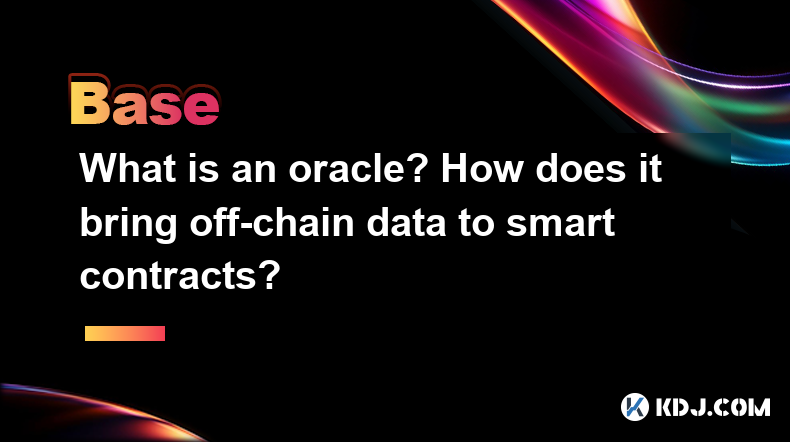
An oracle is a critical component in the blockchain ecosystem that serves as a bridge between the blockchain and the real world. In the context of cryptocurrencies and smart contracts, an oracle is a service that provides external data to smart contracts, enabling them to interact with data and events outside of the blockchain's closed system. This is essential because smart contracts, by design, operate within the confines of their blockchain and cannot access real-world data on their own.
The Role of Oracles in Smart Contracts
Smart contracts are self-executing contracts with the terms of the agreement directly written into code. They automatically enforce and execute the terms of a contract when certain conditions are met. However, these conditions often depend on real-world data, such as stock prices, weather conditions, or sports results. This is where oracles come into play. Oracles fetch, verify, and deliver this external data to smart contracts, allowing them to execute based on real-world events.
How Oracles Work
The process of how oracles bring off-chain data to smart contracts involves several steps. When a smart contract needs external data, it sends a request to an oracle. The oracle then retrieves the required data from external sources, such as APIs, databases, or even human inputs. Once the data is collected, the oracle processes and verifies it to ensure its accuracy and reliability. Finally, the oracle sends the verified data back to the smart contract, which then uses this data to execute its logic.
Types of Oracles
There are several types of oracles, each serving different purposes and operating in different ways. Software oracles retrieve data from online sources, such as APIs and websites. Hardware oracles gather data from physical devices, like sensors and IoT devices. Human oracles involve human input to provide data that cannot be obtained through automated means. Consensus-based oracles use multiple data sources to reach a consensus on the data's accuracy, reducing the risk of manipulation.
The Importance of Data Verification
One of the critical aspects of oracles is data verification. Since smart contracts rely on the data provided by oracles to execute their functions, the accuracy and reliability of this data are paramount. Oracles employ various methods to ensure data integrity, such as cross-referencing multiple data sources, using cryptographic proofs, and implementing decentralized networks of oracles to prevent single points of failure.
Use Cases of Oracles in Smart Contracts
Oracles have a wide range of applications in the cryptocurrency and blockchain space. In decentralized finance (DeFi), oracles are used to provide price feeds for assets, enabling smart contracts to execute trades, loans, and other financial operations based on real-time market data. In supply chain management, oracles can track the movement of goods and verify their conditions, ensuring that smart contracts can enforce delivery terms accurately. In gaming and betting, oracles provide real-time data on sports events or other outcomes, allowing smart contracts to settle bets automatically.
Challenges and Solutions
Despite their importance, oracles face several challenges. Data manipulation is a significant concern, as malicious actors could attempt to feed false data to smart contracts. To mitigate this risk, many oracle solutions employ decentralized networks of oracles, where multiple oracles provide the same data, and a consensus mechanism determines the final data used by the smart contract. Scalability is another challenge, as the demand for oracle services grows with the increasing adoption of smart contracts. Solutions like layer-2 scaling and off-chain computation are being explored to address this issue.
Implementing Oracles in Smart Contracts
To implement an oracle in a smart contract, developers follow a series of steps. Here is a detailed guide on how to integrate an oracle into a smart contract:
Choose an Oracle Service: Select a reputable oracle service that meets your smart contract's needs. Popular oracle services include Chainlink, Band Protocol, and Tellor.
Set Up the Smart Contract: Write the smart contract code, including the logic that will use the data provided by the oracle. Ensure that the smart contract has the necessary functions to request and receive data from the oracle.
Request Data from the Oracle: Within the smart contract, call the oracle's API to request the required data. This typically involves specifying the data source and the type of data needed.
Process the Oracle Response: Once the oracle retrieves and verifies the data, it sends it back to the smart contract. The smart contract then processes this data and executes its logic based on the received information.
Test and Deploy: Thoroughly test the smart contract with the oracle integration to ensure it functions as expected. Once satisfied, deploy the smart contract to the blockchain.
Frequently Asked Questions
Q: Can oracles be used with any blockchain?
A: Yes, oracles can be used with various blockchains, including Ethereum, Binance Smart Chain, and others. However, the specific implementation may vary depending on the blockchain's architecture and the available oracle services.
Q: How do oracles ensure the privacy of the data they handle?
A: Oracles can use encryption and secure communication protocols to protect the privacy of the data they handle. Additionally, some oracle solutions offer privacy-preserving techniques, such as zero-knowledge proofs, to ensure that sensitive data remains confidential.
Q: What happens if an oracle fails to provide data to a smart contract?
A: If an oracle fails to provide data, the smart contract may be unable to execute its logic. To mitigate this risk, smart contracts can be designed to use multiple oracles or fallback mechanisms, ensuring that they can still function even if one oracle fails.
Q: Are there any costs associated with using oracles?
A: Yes, using oracles typically involves costs, which can include fees for data retrieval, processing, and verification. These costs vary depending on the oracle service and the complexity of the data required.
Disclaimer:info@kdj.com
The information provided is not trading advice. kdj.com does not assume any responsibility for any investments made based on the information provided in this article. Cryptocurrencies are highly volatile and it is highly recommended that you invest with caution after thorough research!
If you believe that the content used on this website infringes your copyright, please contact us immediately (info@kdj.com) and we will delete it promptly.
- Wyoming Is Launching a Stablecoin Later This Year, Which Could Be the First Issued by a Public Entity in the U.S.
- 2025-04-08 14:20:12
- BNB vs SOL: Which Crypto to Invest in?
- 2025-04-08 14:20:12
- Big News for XRP as Ripple CEO Meets with Trump and Sparks Intrigue Within the Cryptocurrency Community Hinting at Promising Developments.
- 2025-04-08 14:15:12
- Interactive Brokers Expands Cryptocurrency Portfolio by Adding Four Major Altcoins
- 2025-04-08 14:15:12
- US stocks fall on Wednesday, dragged down by a sharp sell-off in tech stocks, as renewed trade war concerns rattle investors
- 2025-04-08 14:10:12
- Just 24 Hours After Adding Its Name to the Roster of Companies Pursuing a Bitcoin (BTC) Treasury Strategy, GameStop (GME) — Led by Its CEO Ryan Cohen — Is Also Adding Its Name to Those Firms Issuing Convertible Debt to Raise Funds for BTC Acquisition
- 2025-04-08 14:10:12
Related knowledge
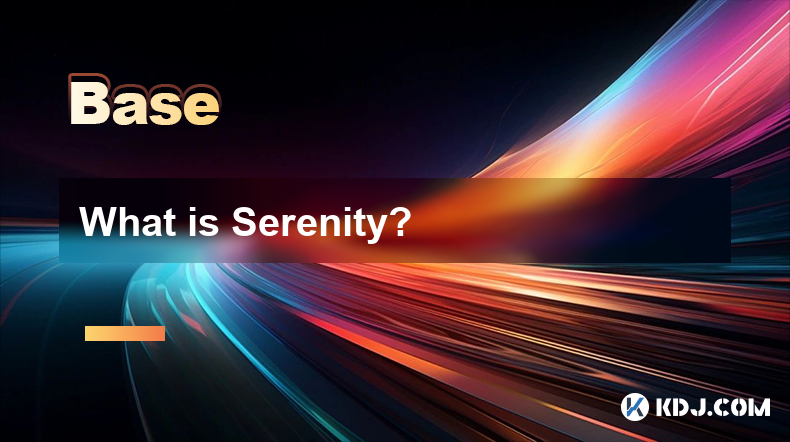
What is Serenity?
Apr 08,2025 at 02:00pm
Serenity, also known as Ethereum 2.0, represents a major upgrade to the Ethereum blockchain. This ambitious project aims to address the scalability, security, and sustainability issues faced by the current Ethereum network. Serenity is not a single update but a series of upgrades that will transform Ethereum into a more efficient and robust platform. Th...

What is Finality Gadget?
Apr 08,2025 at 04:14am
The Finality Gadget is a crucial component in the architecture of certain blockchain networks, particularly those that utilize a hybrid consensus mechanism. It plays a pivotal role in ensuring the finality of transactions, which means that once a transaction is confirmed, it cannot be altered or reversed. This article delves into the intricacies of the ...
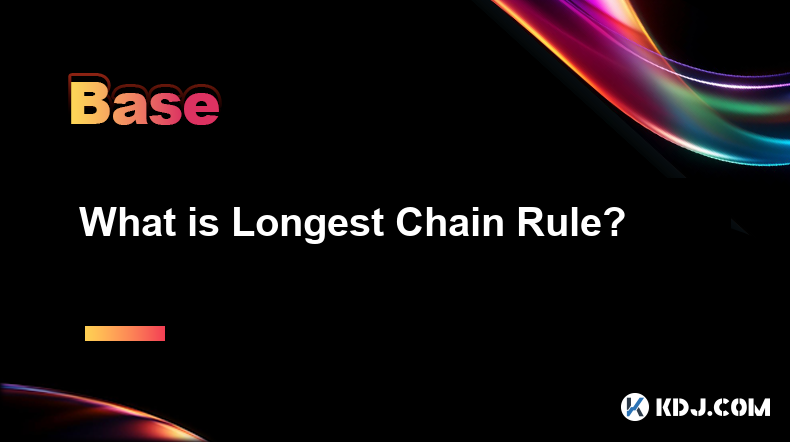
What is Longest Chain Rule?
Apr 08,2025 at 07:50am
The Longest Chain Rule is a fundamental concept in blockchain technology, particularly in the context of cryptocurrencies like Bitcoin. This rule is crucial for maintaining the integrity and security of the blockchain network. In essence, the Longest Chain Rule dictates that the valid blockchain is the one with the most cumulative proof-of-work, which i...

What is Orphan Block?
Apr 08,2025 at 05:00am
What is an Orphan Block?In the world of cryptocurrencies, particularly in blockchain technology, the term orphan block is frequently encountered. An orphan block is a block that has been mined and added to the blockchain but is later discarded or replaced by another block. This phenomenon occurs due to the decentralized nature of blockchain networks, wh...
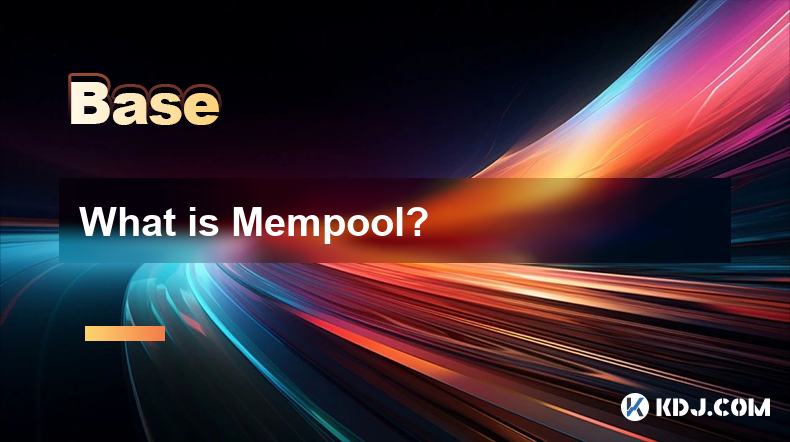
What is Mempool?
Apr 08,2025 at 12:36pm
What is Mempool?In the world of cryptocurrencies, particularly Bitcoin, the term Mempool is frequently mentioned. But what exactly is a Mempool, and why is it important? A Mempool, short for memory pool, is a critical component of the blockchain network that serves as a temporary storage area for unconfirmed transactions. When a user initiates a transac...
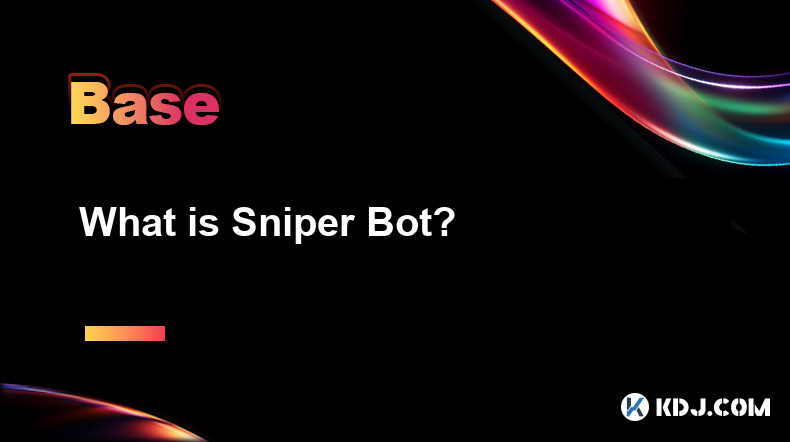
What is Sniper Bot?
Apr 07,2025 at 10:43pm
A Sniper Bot is a type of automated trading software used within the cryptocurrency market to execute trades at optimal times, often milliseconds before other traders. These bots are designed to take advantage of new token listings, price fluctuations, and other market opportunities to buy or sell assets quickly and efficiently. The primary goal of a Sn...

What is Serenity?
Apr 08,2025 at 02:00pm
Serenity, also known as Ethereum 2.0, represents a major upgrade to the Ethereum blockchain. This ambitious project aims to address the scalability, security, and sustainability issues faced by the current Ethereum network. Serenity is not a single update but a series of upgrades that will transform Ethereum into a more efficient and robust platform. Th...

What is Finality Gadget?
Apr 08,2025 at 04:14am
The Finality Gadget is a crucial component in the architecture of certain blockchain networks, particularly those that utilize a hybrid consensus mechanism. It plays a pivotal role in ensuring the finality of transactions, which means that once a transaction is confirmed, it cannot be altered or reversed. This article delves into the intricacies of the ...

What is Longest Chain Rule?
Apr 08,2025 at 07:50am
The Longest Chain Rule is a fundamental concept in blockchain technology, particularly in the context of cryptocurrencies like Bitcoin. This rule is crucial for maintaining the integrity and security of the blockchain network. In essence, the Longest Chain Rule dictates that the valid blockchain is the one with the most cumulative proof-of-work, which i...

What is Orphan Block?
Apr 08,2025 at 05:00am
What is an Orphan Block?In the world of cryptocurrencies, particularly in blockchain technology, the term orphan block is frequently encountered. An orphan block is a block that has been mined and added to the blockchain but is later discarded or replaced by another block. This phenomenon occurs due to the decentralized nature of blockchain networks, wh...

What is Mempool?
Apr 08,2025 at 12:36pm
What is Mempool?In the world of cryptocurrencies, particularly Bitcoin, the term Mempool is frequently mentioned. But what exactly is a Mempool, and why is it important? A Mempool, short for memory pool, is a critical component of the blockchain network that serves as a temporary storage area for unconfirmed transactions. When a user initiates a transac...

What is Sniper Bot?
Apr 07,2025 at 10:43pm
A Sniper Bot is a type of automated trading software used within the cryptocurrency market to execute trades at optimal times, often milliseconds before other traders. These bots are designed to take advantage of new token listings, price fluctuations, and other market opportunities to buy or sell assets quickly and efficiently. The primary goal of a Sn...
See all articles






















































































